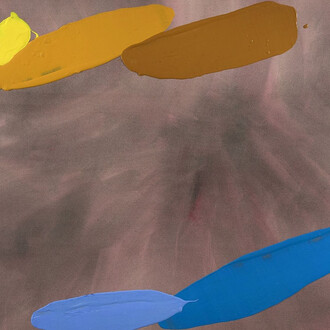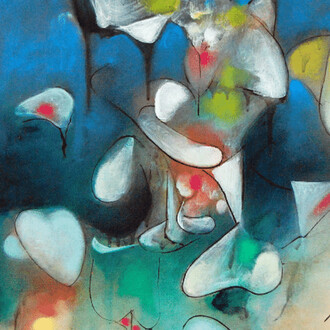Meredith Rosen Gallery is pleased to present Hannah Villiger (1951-1997) in collaboration with The Estate Hannah Villiger (Basel, Switzerland). Skulptural is the first exhibition of Villiger’s work in New York since 1991, and follows the recent retrospective at Centre Pompidou.
In Villiger’s work, eternity lies in the gaps between an index of fragments. Refusing the containment of portraiture, the wholeness of her body remains out of view, in the distance between her outstretched arm and the sliver of what we can see.
Skulptural presents large scale c-prints from 1980 and 1997. Both works are derived from polaroids and show limbs gripped and exposed under a bright light against a dense dark background. The body embraces itself tensely as knuckles and ankles protrude with pink shadows. In one of Villager's final works, Block, shown for the first time in New York, a metallic form hovers in the background, indistinguishable except for its glimmer of silver sheen against the black as her limbs hold themselves unflinchingly against the coldness of an unknown structure.
Hannah Villiger’s conceptual sculpture practice utilized the camera as an instrument to examine the body in her immediate surroundings. Without a tripod or any extraneous equipment, Villiger enlarged Polaroid photographs, printed them on aluminum and arranged them into blocks of several images. Her distinct works show close-up shots—up to an arm’s length away—of her exposed body fragmented by the borders of the frame.
During her residency at Istituto Svizzero in Rome from 1974 to 1976, Villiger became inspired by the Arte Povera movement and their pared down use of non-traditional materials. Villiger began to limit her sculptural practice to forms constructed by her own body and documented by her camera. This simplification of her materials became a breakthrough which allowed her to create the sculptural images she became known for. Her blocks of images confront the viewer in a physical way as her compressed body shifts slightly in the gaps between pictures. The density and arrangement of Villiger’s work counteracts the picture as a format for representation. Villiger’s resistance is felt in both what is visible and what lies outside of the frame and in doing so, her autonomy and self-definition remains intact.
Hannah Villiger (b. 1951, Switzerland, d. 1997, Switzerland) completed her studies at the School of Applied Arts in Lucerne in 1974 before she settled in Basel in 1977. In the early 1980s, Villiger began to use Polaroid cameras to explore her body and surroundings as material for her abstract compositions. Between 1992 and 1997, Villiger taught at the Basel School of Art and Design. During her lifetime, Villiger’s work was included in major institutional exhibitions and biennales including at the 22nd Bienal de São Paulo, Brazil (1994), Kunsthalle Basel (1985), 9th Biennale de Paris (1975) and the 1st and 3rd Biennial of Swiss Art (1971 and 1978), Kunsthaus Zurich. Posthumous solo exhibitions have been held at Kunsthalle Basel (2001); Kunsthalle Bonn (2001); nGbK Neue Gesellschaft für bildende Kunst, Berlin (2002); MAMCO Musée d'art moderne et contemporain, Geneva (2007); Museum für Gegenwartskunst, Basel (2008); Centre culturel suisse, Paris (2012); Istituto Svizzero di Roma (2021); Museum Susch, Switzerland (2023); Weserburg Bremen, Germany (2023) and Centre Pompidou, Paris (2024). This is the first exhibition of Villiger’s work at Meredith Rosen Gallery.
















